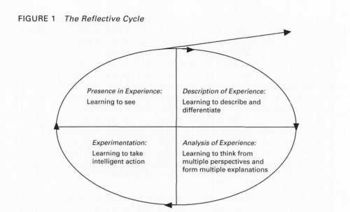Models of action competence
| Learning and Teaching in Practice | |
|---|---|
| Module 5: Teaching philosophy | |
| Action competence | Introduction | Models of action competence | Summary |
Action competence as a concept has mainly been developed in environmental, sustainability and health education. The Teaching and Learning Research Initiative (2009) is one example of how this concept can be applied in education: A framework for developing action competence in EfS.
- This relates to education for sustainability but can be adapted for any area of education.
Critical thinking underpins action competence. When this skill is applied to solving societal issues through using the four models presented here, learners are likely to gain a better understanding of the other tenets associated with action competence: social justice and empowerment.
The focus on social issues and social justice can be seen in the previous section's case study where Brett's carpentry students were working voluntarily with a not-for-profit organisation to solve a housing issue in the community. However, the involvement in the real world can also be as part of normal business practices: the example in the photograph shows students working on a real-world construction project as a paid contract.
Learning and teaching models for action competence
A concept known as effective pedagogy is associated with sustainable learning and teaching and action competence. Four learning and teaching models support effective pedagogy: co-operative learning, inquiry learning, experiential learning and reflective learning. Learning design and the design of assessments needs to be flexible enough to accommodate these different approaches to learning and teaching.
Co-operative learning
This is an interactive model of learning where students are guided by a facilitator to work together on projects that influence societal change. Collaboration and taking responsibility are key factors in this model. Ako is practised in that the relationship between the facilitator and learners is reciprocal, each learning from the other.
As a result of this collaborative approach to learning, learning communities and/or communities of practice may develop. "Communities of practice are groups of people who share a concern or a passion for something they do and learn how to do it better as they interact regularly" (Wenger, 2006).
Inquiry learning
In this model an holistic and integrated approach is taken. Learners explore issues, ask questions and investigate them and where possible develop solutions. This process, also known as action-based inquiry, empowers learners through enabling participation in decision making, and by encouraging ownership of the learning process; as such it is learner-centred. This video (4.19 min) - Teaching inquiry learning by Mark Chaloner provides an entertaining overview of the main concepts.
Experiential learning
This is learning by doing in situations that are closely connected to real life. Learners are encouraged to observe or engage in an activity, reflect and think critically, link abstract ideas (theory) to the activity and "apply the knowledge they have gained to the next activity or to their daily lives" (TKI, n.d.).
You may be familiar with David Kolb's model of experiential learning. This short video (8.30 min) - Kolb's Learning Style Inventory & How to Use It Effectively explains how different learning styles an impact on this model of learning. For example, some learners are good at information gathering whereas others are able to take leadership roles.
Reflective learning
The effect of reflection on learning needs to be considered in this model. According to a number of researchers, reflection is necessary if we are to learn from our experiences and change our perspectives. Jennifer Moon (2004) discusses the relationship between reflection and learning on page 5 of her article.

In contrast, Rodgers (2002) views reflection and learning as a cyclical process. She describes four phases:
- Phase one - Presence in experience: Learning to see - ability to perceive and respond intelligently;
- Phase two – Description: Learning to describe and differentiate - “look and see the variety and nuance present in moments” and not interpret;
- Phase three - Analysis of experience: Learning to think critically and create theory; and
- Phase four – Experimentation: Learning to take intelligent action (Rodgers, 2002, p.235).
|
References
- Moon, J. (2001). PDP Working Paper 4. Reflection in higher education learning [Electronic Version]. LTSN Generic Centre 25. Retrieved from http://www.heacademy.ac.uk/
- Odabaşı, H., Kurt, A. et al. (2011). ICT action competence in teacher education. EDULEARN11 Proceedings. Retrieved from http://library.iated.org/view/ODABASI2011ICT
- Rodgers, C. (2002). Seeing student learning: teacher change and the role of reflection. Harvard Educational Review, 72(2), 230-253.
